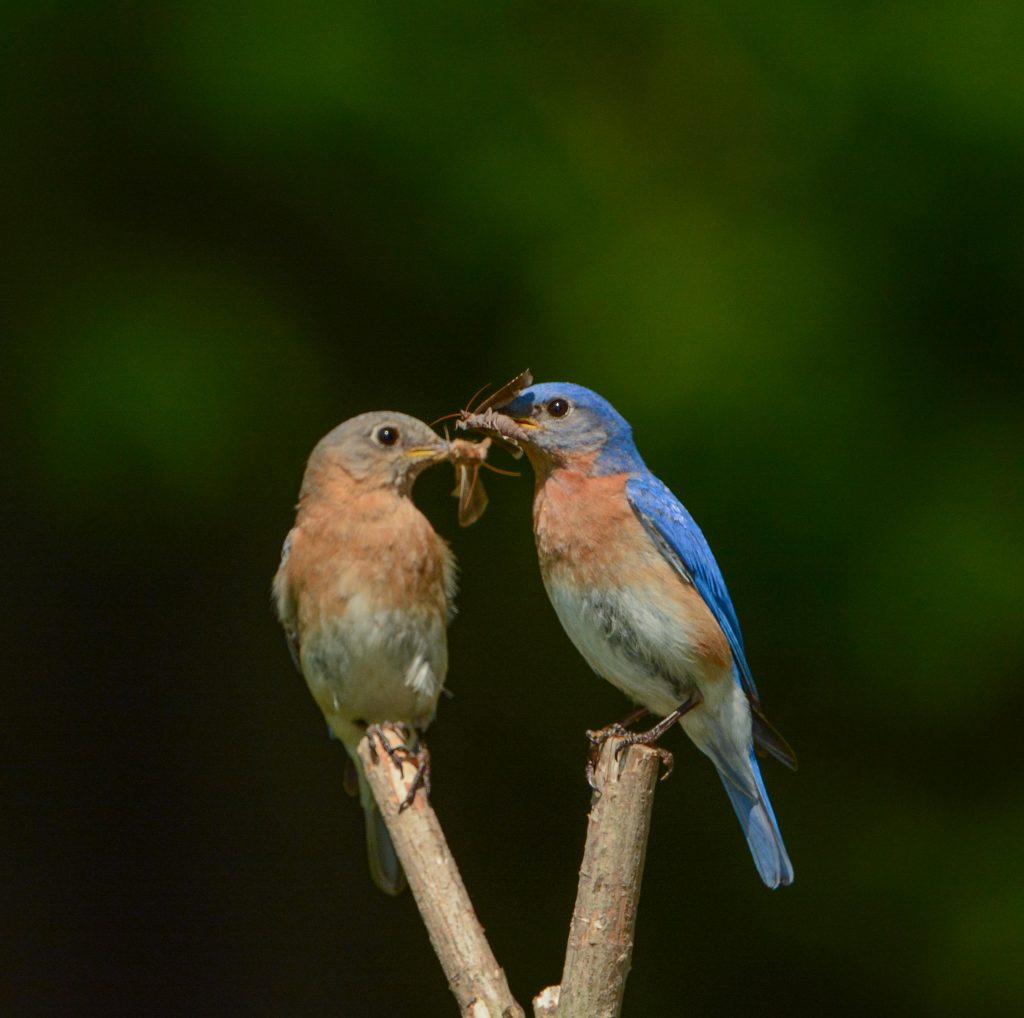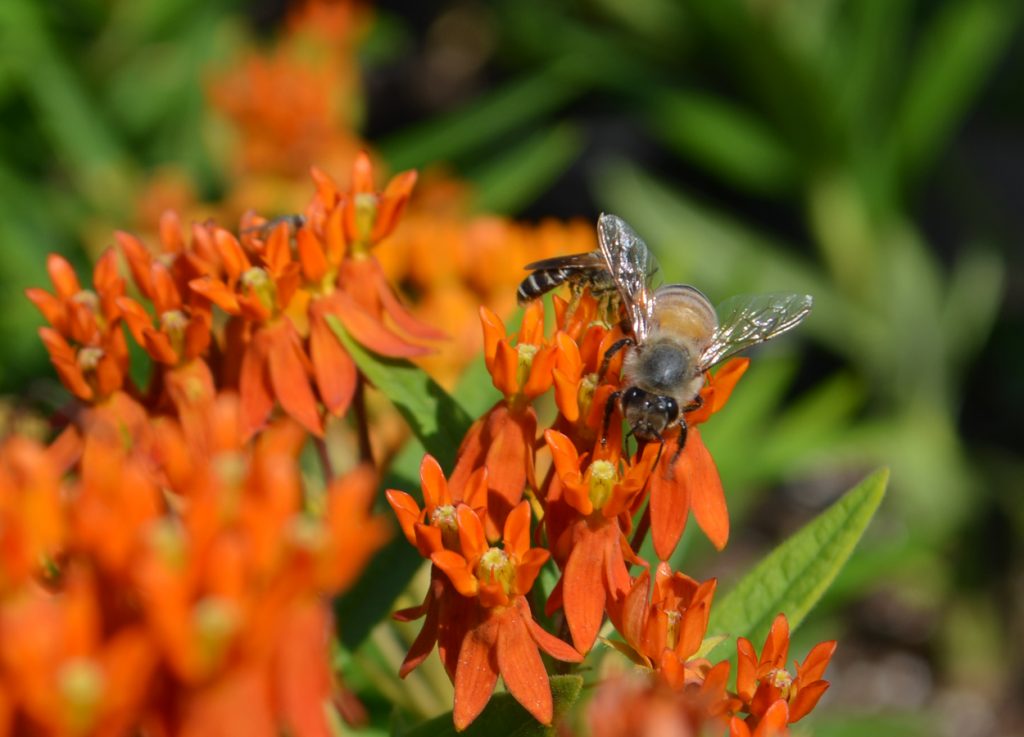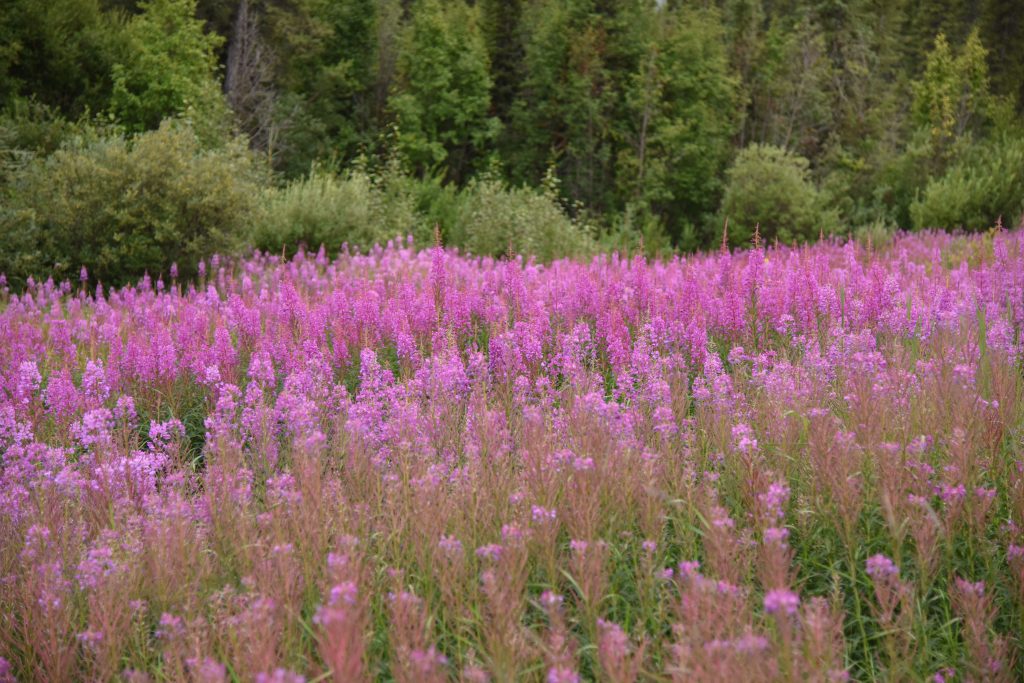Restoring Nature’s Relationships at Home with Doug Tallamy
Recently I had the pleasure of attending Dr. Doug Tallamy’s lecture, Restoring Nature’s Relationships at Home.  It was hosted by Lewis Ginter Botanical Garden’s education department and I was moved to see it was sold out, with 245 people signed up to attend. It is encouraging to see so many people are aware there are concerns about supporting our local eco-system through native plantings. I’m hopeful to see so many people who want to learn what they can do to help. To me, that is the big take away from Dr. Tallamy’s talks and his books, Bringing Nature Home, and The Living Landscape co-authored with Rick Darke. Tallamy presents positive changes that we can make in our own yards and landscapes. And if each of us does something we can make a difference on a large scale.
It was hosted by Lewis Ginter Botanical Garden’s education department and I was moved to see it was sold out, with 245 people signed up to attend. It is encouraging to see so many people are aware there are concerns about supporting our local eco-system through native plantings. I’m hopeful to see so many people who want to learn what they can do to help. To me, that is the big take away from Dr. Tallamy’s talks and his books, Bringing Nature Home, and The Living Landscape co-authored with Rick Darke. Tallamy presents positive changes that we can make in our own yards and landscapes. And if each of us does something we can make a difference on a large scale.
I was so inspired by Tallamy’s talk that I wanted to capture and share some highlights of what I learned.
Nature is a series of specialized relationships. Things are connected and the loss of one plant or bug affects many other plants, bugs, animals and also us! What are some of the causes of the decline in nature’s relationships? Well, to start, habitat loss, insecticide use, invasive plants, and climate change.
Insects are essential to our ecosystem. Without insects, plants, birds, animals or even humans couldn’t continue to survive. Insects not only pollinate plants, but they also provide food sources for other insects, birds, and animals. Pollination is essential for plants to reproduce, insects are the primary pollinators of something like 80 percent of all flora. The vast majority — 90 percent — of insects will reproduce only on plants with which they share an evolutionary history, in other words, native plants. This specific plant that insects eat is called a host plant. A well-known example of a host plant is milkweed. Monarch butterfly caterpillars will only eat plants in the milkweed family. So milkweed is a host plant. The loss of host plants starts a chain of decline. A powerful form of conservation each of us can do is to plant host plants for insects that are native to our area.
Birds & Native Plants
The vast majority — 96 percent — of terrestrial birds, or birds that dwell on the land, eat insects. Caterpillars are the primary source of food for most baby birds, with spiders being the second largest food source. Caterpillars are a major source of protein and carotenoids – which all vertebrates need and only plants make. It takes LOTS of caterpillars to feed a clutch of baby birds. It takes plants, native plants, to make lots of caterpillars. If you want birds, you need caterpillars, and if you want caterpillars you need native plants.
We need to think about plants as bird feeders (native plants feed insects, that birds eat). While native plants are crucial, we don’t have to use only native plants. It’s not the presence of non-native plants, it’s the absence of native plants that is the problem. One of Tallamy’s doctoral students just did a study and the results show that to support nature we need to have a minimum of 70 percent native plants. But more is better.
Tallamy said that in 2016 it was documented that there are 1.5 billion fewer breeding birds compared to 40 years ago. Additionally, 46 species have lost half of their population.
Productive Native Plants
Did you know that foxes and bears eat insects? I didn’t! In fact, about a quarter of their diet consists of insects. Oh and hummingbirds also eat a lot of insects, so while they like the feeders of nectar, they also need insects to survive.
Scientists are finding out that some native plants are more useful to the insect population than other native plants, these are called productive native plants. In fact, 5 percent of our native plants make 75 percent of the food that drives food webs. Tallamy says, “We need to think more about productivity and not as much about nativity.” Oak trees are one of the major productive native plants we can use and are native in 84 percent of counties in the United States. You can find out which are the MOST productive native plants to your area by going to native plant finder website and typing in your zip code.
Different Kinds of Extinction
Did you know that local extinction is just as important as global extinction? The good news is that each of us can work at preventing local extinction by adding productive native plants to our landscapes. Did you know there are 3,300 species of introduced or non-native plants in the U.S., many of which are invasive or destroy native plants ability to survive?
But again, the good news — 83 percent of the United States is privately owned. So, the power to solve this problem is in our hands. Even if the government were to diligently work on conservation and ecological practices it wouldn’t be enough to stop the major decline in bugs, birds, animals, and humans. It is now up to each of us to play a role in the restoration of our planet. Dr. Tallamy calls this 21st-century gardening. He encourages us to create corridors of habitat by reducing the area of our lawns, and to begin the transformation from alien ornamental plants to native ornamentals, and to limit the use of pesticides. Using mosquito spraying companies is killing all insects. Dr. Tallamy says the better way to prevent mosquitoes is to kill them in the larval stage by using mosquito dunks in open water sources. Dunks are easy to get, you can find them at hardware stores or online and are not harmful to anything other than mosquito larvae.
Making a Change in our Own Neighborhood
Each of us has a role we can play in helping to restore some balance to nature. I can make a difference and you can make a difference. If each of us does something we can change the trajectory from dark to hopeful. I will strive to do everything I can to help our ecosystem with the hope that my grandchildren might see large migrations of monarch butterflies, enjoy catching fireflies, watch birds, eat food that was pollinated and just enjoys plants. Restoring our native plants is key to maintaining the biodiversity that keeps our ecosystem healthy.
I am happy to say Lewis Ginter Botanical Garden is working in numerous ways throughout the garden supporting pollinators and planting host plants, planting native plants, providing wildlife habitat, providing educational exhibits like M&T Bank Butterflies LIVE!. and offering educational classes, talks, and symposia like this one to connect people through plants to improve communities.
Editor’s Note: The percentage of native plants required to support wildlife has been corrected to 70 percent.

